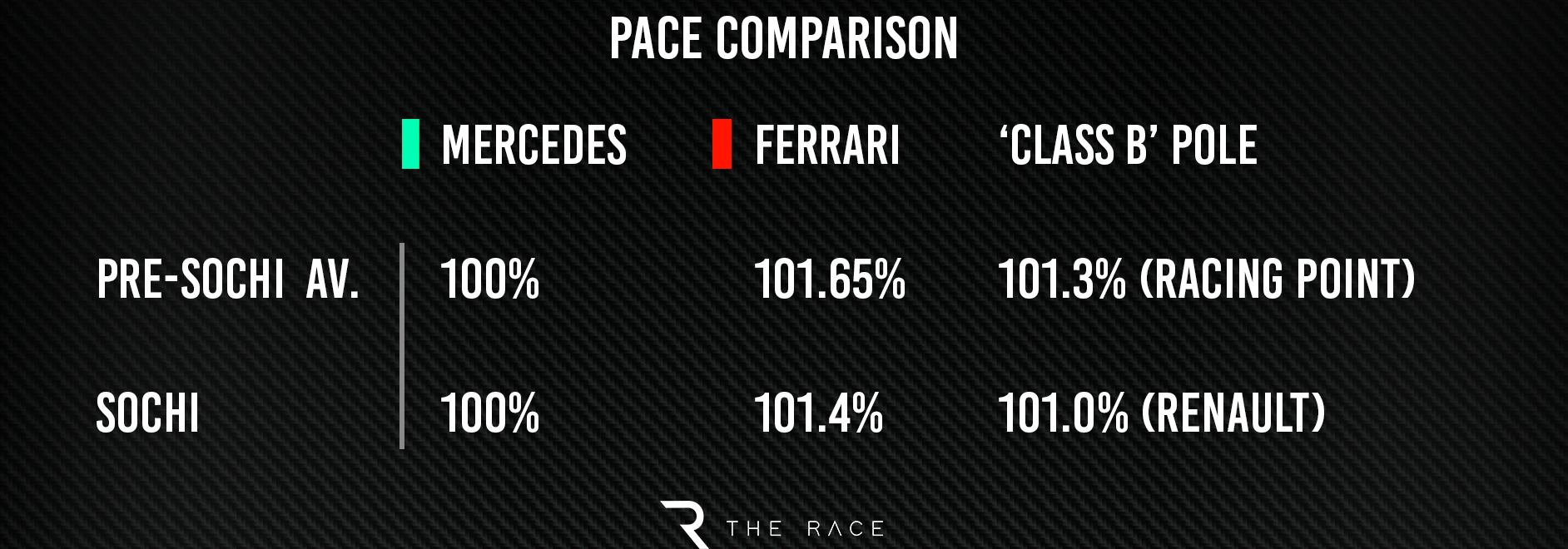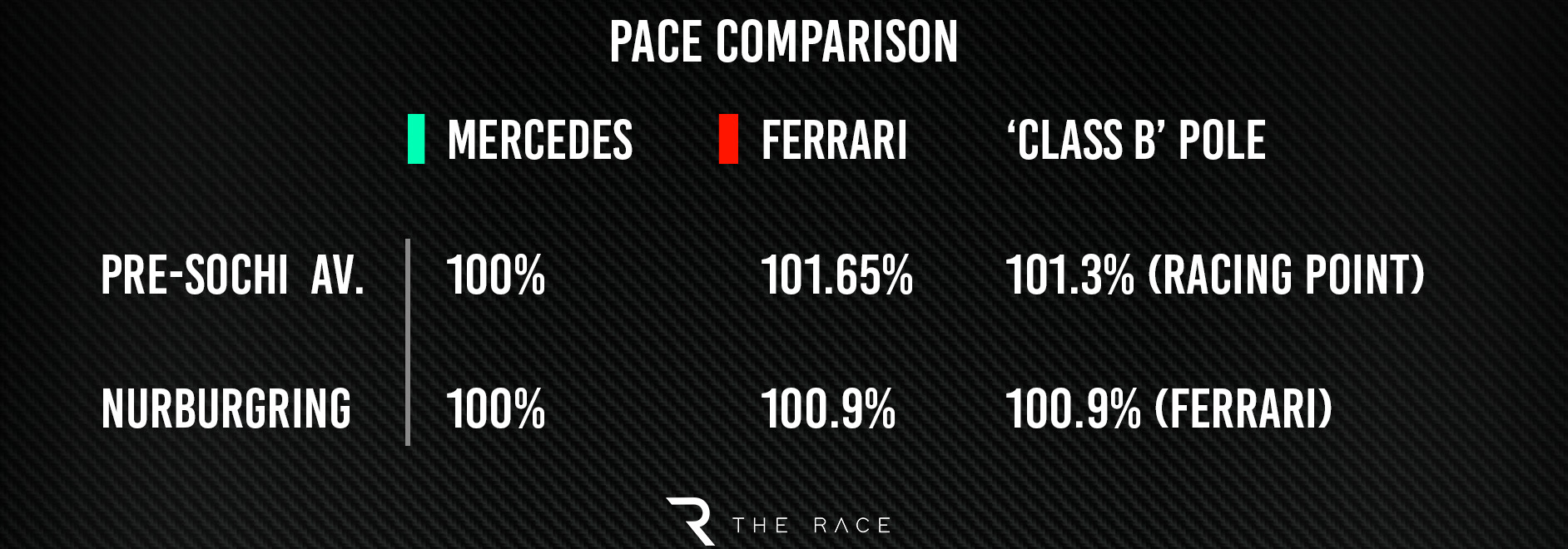This weekend’s Portuguese Grand Prix is the scene for the final instalment of Ferrari’s three-part upgrade to its troubled 2020 Formula 1 car.
The team will focus on the rear of the car both with this weekend’s upgrade – including a new diffuser – and using tokens on next year’s car, but it hasn’t given up on 2020 and its updates are aimed at making it a solid fourth behind Mercedes and Max Verstappen.
The upgrades began at Sochi where a new rear wing endplate, new nose cape and additional mini vanes on the leading edge of the floor were introduced. At the Nurburgring a heavily-reworked barge board design was added. Ferrari has insisted it was not expecting major gains from these parts, but was just ensuring it was proceeding in the right direction with an eye to its closely-related 2021 car.
So, what have the Ferrari updates in the last two races brought it? The only way we have of measuring that is through comparison of its qualifying times relative to the others. But even when we do this and convert everything to a percentage of pole so as to neutralise the difference in track lengths, there can still be complicating factors.
Such was the case at Sochi where a bit of cloud cover in Q3 lowered the track temperatures just enough to give a big increase in track grip. So anyone not making it into Q3 (and at Sochi that included Ferrari) looks artificially worse when measured against pole. That is the real explanation for why Ferrari – despite its phase one update – was further away from pole at Sochi than at any other track this year, at +2.12% (compared to a seasonal average up to that point of +1.65%).
That Sochi figure is wildly unrepresentative. Looking at the practice sessions there, ignoring the first one as unrepresentative (because neither Mercedes drivers got in decent laps amid various flat-spotting dramas), we see that Ferrari was at around +1.9% off the pace in FP2 and +1.4% in FP3.
In qualifying, the Q2 picture was complicated, as both Bottas and Verstappen did their times on the medium and Hamilton had his deleted time/11th hour drama on softs – making all their times unrepresentative to the soft-shod clear lap of Charles Leclerc.
But adjusting for the Pirelli-estimated 0.4s gap between medium and soft around Sochi and subtracting that from Bottas’ session-heading Q2 lap would put Leclerc at +1.3%, tallying closely with the picture in FP3.
While it’s true that the Mercedes drivers are not typically at their limit in Q2 as they have the relative certainty of getting through regardless (which would flatter Ferrari in this comparison), the difference would typically be far less than the apparent 0.6-0.7s improvement in track conditions in the cooler Q3 session. The Q2 or FP3 comparison, in other words, looks far more realistic than comparing the Merc Q3 time to Ferrari’s from Q2.
Making an educated estimate of 101.4% for Ferrari in Sochi, gives the following picture:

In other words, the phase one upgrade did appear to add performance. Charles Leclerc’s sixth place in the race was, however, flattered by the strategy advantage starting on the mediums brought him over those in the lower part of Q3 obliged to start on the softs.
Things were more straightforward at the Nurburgring, where Leclerc – using phase two of the upgrade – made it into Q3 and produced a peach of a lap to go fourth-quickest. Giving us the following picture:

Phase two of the upgrade helped Leclerc set ‘Class B’ pole (first behind Mercedes and Red Bull) for the Eifel Grand Prix, with a lap closer to outright pole than at any other race of the season.
However, there are a couple of caveats: 1) He quickly dropped down the order from there in the race and his finishing place of seventh was behind Renault, McLaren, Racing Point and AlphaTauri. 2) Everyone was closer to Mercedes’ pole at the Nuburgring than their seasonal average, suggesting that Mercedes had under-performed in the cool conditions.
So while it is apparent that both phase one and phase two of the Ferrari upgrade did find the team some performance, the car still tends to qualify better than it races (Sochi, the only exception to this in recent races, was tyre choice-related). The way the car uses its tyres is not a strong point and may well be something that Phase 3 of the upgrade can address.
Part of the reason for why the car is hard on its rear tyres is believed to be the hydraulic rear suspension, introduced in 2019. This is apparently badly calibrated at the low downforce levels the team is obliged to run to compensate for its power shortfall, but worked rather better at the higher downforce enabled by the big horsepower of the 2019 engine.
“I think part of a contributor is the balloon tyre pressures we’re forced to run at,” said Sebastian Vettel at Monza. “It’s far away from where I think the tyres would like to run but we have to stick to the rules.”

